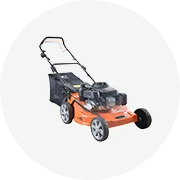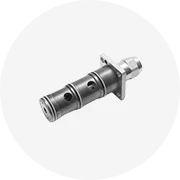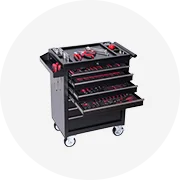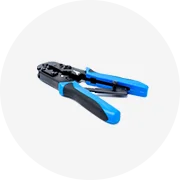Types of Side-by-Side Vehicles (SXS)
A Side-by-Side (SXS), also known as a UTV (Utility Task Vehicle), is an off-road vehicle designed for two or more occupants seated side by side. These vehicles are available in numerous types and configurations, making them highly versatile and adaptable to various applications such as recreation, utility, performance, and even environmentally conscious transportation. Understanding the different types of SXS helps users choose the right model based on their specific needs.
Recreation SXS
Built with adventure in mind, these SXS models are tailored for trail riding, dune bashing, and other off-road recreational activities. They typically feature powerful engines, high-performance suspension systems, and ergonomic seating for rider comfort during long excursions.
Advantages
- Optimized for trail performance
- Comfortable seating for extended use
- Great for family outings and group adventures
- Available in multiple engine sizes
Limitations
- Limited cargo capacity
- Not ideal for heavy-duty tasks
- Higher cost for premium models
Best for: Off-road enthusiasts, trail riders, weekend adventurers
Utility SXS
Designed for work rather than play, Utility SXS models come equipped with features like rear cargo beds, towing capabilities, and additional storage compartments. These vehicles are commonly used in agriculture, construction, landscaping, and property maintenance.
Advantages
- High towing and hauling capacity
- Durable build for rough conditions
- Versatile attachments available
- Ideal for daily work use
Limitations
- Less focus on speed and agility
- Usually heavier and slower
- Minimalist interior design
Best for: Farmers, ranchers, contractors, outdoor workers
Sport SXS
Racing enthusiasts and thrill-seekers often opt for Sport SXS vehicles, which are engineered for maximum power, agility, and handling. These models usually feature turbocharged engines, advanced suspension setups, and lightweight frames for superior performance on tracks or challenging terrain.
Advantages
- High horsepower and top speeds
- Excellent cornering and stability
- Lightweight chassis for responsiveness
- Ideal for racing and dune performance
Limitations
- Pricier than standard models
- Reduced comfort for everyday driving
- Higher maintenance costs
Best for: Racing events, high-speed desert runs, adrenaline junkies
Touring SXS
Touring SXS models are designed for long-distance travel with a focus on rider comfort, convenience, and amenities. These vehicles often include features like climate control, adjustable seats, windshield wipers, and onboard entertainment systems, making them perfect for multi-day trips or scenic drives.
Advantages
- Spacious and comfortable interiors
- Climate-controlled cabins
- Long-range fuel tanks
- Quiet operation at highway speeds
Limitations
- Heavier and less agile
- More expensive than basic models
- Less suited for extreme off-roading
Best for: Adventure travelers, road trippers, luxury seekers
Electric SXS
With growing environmental awareness, Electric SXS models are gaining popularity. Powered by electric motors and rechargeable batteries, these vehicles offer zero emissions, low noise levels, and reduced maintenance requirements, making them ideal for eco-conscious users and sensitive environments.
Advantages
- Zero tailpipe emissions
- Near-silent operation
- Lower operating costs
- Eco-friendly for protected areas
Limitations
- Shorter range compared to gas models
- Longer recharging times
- Higher initial purchase price
Best for: National parks, wildlife reserves, urban exploration
Hybrid SXS
Combining the strengths of both electric and internal combustion technologies, Hybrid SXS models offer improved fuel efficiency, lower emissions, and the flexibility to switch between power sources depending on terrain and usage demands. This makes them a great middle-ground option for diverse applications.
Advantages
- Improved fuel economy
- Reduced emissions
- Flexible power options
- Good for mixed-use scenarios
Limitations
- Complex dual-system maintenance
- Higher upfront cost
- Still partially reliant on fossil fuels
Best for: Mixed-terrain use, environmentally aware operators, hybrid technology adopters
| Type | Main Use | Power Source | Key Features | Best For |
|---|---|---|---|---|
| Recreation SXS | Off-road fun and trails | Gasoline | Performance suspension, trail-ready tires | Weekend warriors, trail riders |
| Utility SXS | Work and hauling | Gasoline | Cargo bed, towing hitch, storage | Farmers, landscapers, contractors |
| Sport SXS | High-speed performance | Gasoline (often turbocharged) | Lightweight frame, aggressive suspension | Racers, performance seekers |
| Touring SXS | Long-distance travel | Gasoline | Climate control, luxury seating | Adventure travelers, road trippers |
| Electric SXS | Eco-friendly transport | Electric battery | Quiet motor, zero emissions | Protected lands, green zones |
| Hybrid SXS | Mixed use | Hybrid (gas + electric) | Fuel-efficient, flexible power | Multi-purpose operations |
Expert Tip: When choosing a SXS, consider not only your primary use but also secondary applications. For example, a Sport SXS can be modified with racks and accessories to handle light utility tasks, while a Utility SXS can be upgraded with performance parts for better trail capability.
Specifications and Maintenance of 3 SXS Vehicles
The maintenance of 3 SXS (Side-by-Side) vehicles is crucial for ensuring longevity, safety, and optimal performance. These off-road machines endure demanding conditions, from rugged terrain to high-speed operation. Proper care involves a series of regular checks and replacements that keep the vehicle functioning at its best. Below are key maintenance areas every 3 SXS owner should prioritize.
Regular Oil Changes
Engine oil serves as the lifeblood of any 3 SXS engine, playing a vital role in lubrication, heat dissipation, and internal component protection. Over time, exposure to high temperatures and contaminants causes oil to degrade, losing its viscosity and protective properties. This breakdown can lead to increased friction between moving parts, accelerated wear, and potential overheating.
By adhering to a consistent oil change schedule—typically every 50–100 hours of operation or according to manufacturer guidelines—riders ensure continuous protection and optimal engine performance. Fresh oil restores lubrication efficiency, allowing components like pistons, camshafts, and bearings to operate smoothly without undue stress. Additionally, clean oil aids in heat transfer, preventing localized hotspots that could damage sensitive engine components.
Choosing the correct oil type and viscosity is also essential. Many modern 3 SXS engines require synthetic blends or full synthetic oils designed for high-performance applications. Always refer to your vehicle's manual for specifications regarding oil grade, filter compatibility, and torque settings for the drain plug.
Tire Care
Tires are one of the most critical contact points between your 3 SXS and the terrain it traverses. Proper tire maintenance significantly impacts handling, fuel efficiency, comfort, and safety. Neglecting tire care can lead to uneven wear, reduced traction, and even catastrophic failure during high-speed or off-road use.
Inspection: Regularly examine tires for signs of wear, punctures, or damage. Look for uneven tread wear patterns that may indicate alignment issues or improper inflation. Also, check for embedded debris like rocks or metal fragments that could cause slow leaks or accelerated wear.
Inflation: Maintaining proper tire pressure is crucial. Underinflated tires increase rolling resistance, reduce fuel economy, and create excessive heat buildup—leading to premature failure. Overinflation, on the other hand, reduces contact patch area, resulting in poor traction and uneven wear. Use a quality tire pressure gauge to check inflation levels before each ride, especially after long periods of storage or temperature changes.
Rotation and Replacement: Depending on usage, consider rotating your tires periodically to promote even wear across all four wheels. When tread depth becomes too shallow or structural damage is evident, replace the tire immediately to maintain safe operation.
Regular Maintenance Checks
Consistent and comprehensive maintenance checks are essential for preserving the mechanical integrity of your 3 SXS. The owner’s manual typically provides a detailed schedule outlining inspection intervals for various systems and components. Following this schedule ensures nothing is overlooked and helps identify potential issues before they escalate into costly repairs.
Engine Systems: Inspect belts, hoses, and pulleys for signs of wear, cracks, or fraying. Ensure all connections are secure and free of corrosion. Check coolant levels and condition, replacing if necessary to prevent overheating.
Transmission & Drivetrain: Monitor transmission fluid levels and condition. Listen for unusual noises during gear shifts, which could indicate bearing wear or clutch degradation. For 4x4 models, inspect differential fluids and universal joints regularly.
Electrical Components: Test lights, horn, gauges, and battery voltage. Clean terminals and apply dielectric grease to prevent corrosion. Replace any worn or damaged wiring harnesses promptly.
Brake System: Examine brake pads, rotors, and calipers for wear. Ensure brake fluid levels are adequate and look for signs of leakage. Test pedal feel and stopping distance regularly.
Air Filter Maintenance
The air filter plays a crucial role in engine performance by filtering out dirt, dust, and debris before it enters the combustion chamber. A clogged or dirty air filter restricts airflow, leading to a rich fuel mixture, reduced power, and increased fuel consumption.
Riders operating in dusty or muddy environments should pay extra attention to their air filters. It’s recommended to clean foam filters with appropriate cleaner and re-oil them according to the manufacturer’s instructions. Paper filters, while less maintenance-intensive, must be replaced once they reach their capacity for particulate absorption.
Following the recommended service intervals ensures the engine receives a steady supply of clean air, promoting efficient combustion and protecting internal components from abrasive particles. Always carry spare filters when riding in remote or challenging environments where replacement might be necessary on the go.
Fuel System Maintenance
A well-maintained fuel system is essential for reliable engine performance. It includes components such as the fuel tank, pump, lines, injectors, and fuel filter—all of which must function properly to deliver the right amount of clean fuel under correct pressure.
Fuel Filter: The fuel filter traps contaminants that could otherwise enter the engine and damage injectors or disrupt combustion. A clogged filter leads to reduced fuel flow, hesitation, and power loss. Replace the fuel filter at the recommended interval or sooner if symptoms arise.
Injectors: Fuel injectors can become gummed up over time due to ethanol-blended fuels or extended storage. Using a quality fuel additive can help keep them clean and functioning efficiently. If performance drops occur unexpectedly, consider having the injectors professionally cleaned or tested.
Fuel Pump: A failing fuel pump may produce a whining noise or fail to provide sufficient pressure, causing stalling or difficulty starting the engine. Regular inspections and prompt replacement of faulty components can prevent roadside breakdowns.
Important: Always use fresh, high-quality fuel from reputable sources. Stale fuel can degrade rubber components and cause varnish buildup in the carburetor or fuel injection system. Consider using fuel stabilizers if the vehicle will be stored for extended periods.
| Maintenance Area | Frequency | Tools/Products Needed |
|---|---|---|
| Oil Change | Every 50–100 hours or 6 months | Quality motor oil, oil filter, wrench, funnel, catch pan |
| Tire Inspection & Inflation | Before each ride | Tire pressure gauge, portable air compressor, tire repair kit |
| Air Filter Cleaning/Replacement | Every 25–50 hours or more frequently in dusty conditions | Cleaner/oil for foam filters, replacement paper filters |
| Fuel Filter Replacement | Annually or every 100 hours | New fuel filter, wrench, fuel line clamps |
| Comprehensive Maintenance Check | Bi-annually or every 100–200 hours | Multimeter, grease, lubricants, visual inspection tools |
How to Choose SxS UTV Parts and Accessories
Selecting the right parts and accessories for your Side-by-Side (SxS) or Utility Task Vehicle (UTV) is crucial for enhancing performance, safety, and overall enjoyment. Whether you're upgrading for off-road adventures, utility work, or recreational use, careful consideration of several key factors ensures you make informed decisions that align with your needs.
Compatibility with Your SxS Make and Model
Ensuring compatibility between the part and your specific vehicle is essential. Different makes and models have unique dimensions, mounting systems, and design features that affect how components fit and function.
- Check product specifications for listed compatible models
- Measure existing mounting points or frame dimensions when in doubt
- Verify if the part requires any additional adapters or modifications
Pro tip: Cross-reference part numbers with manufacturer websites or contact customer support for confirmation before purchasing.
Prioritize Quality Materials and Brands
High-quality parts significantly impact the longevity, reliability, and performance of your SxS. Investing in reputable brands often pays off through reduced maintenance, better durability, and improved functionality.
- Look for materials like powder-coated steel, aluminum alloys, or reinforced polymers
- Well-known manufacturers typically offer superior engineering and testing
- Quality components maintain structural integrity under stress and adverse conditions
Warning: Avoid generic knock-offs that may compromise safety or fitment despite lower upfront costs.
Performance Upgrades and Customization
If you're aiming to enhance your SxS's capabilities—whether for racing, trail riding, hauling, or utility work—performance upgrades can make a significant difference in handling, speed, and versatility.
- Suspension kits improve ground clearance and ride comfort over rough terrain
- Exhaust system upgrades can boost horsepower and throttle response
- Cold air intakes optimize airflow for increased engine efficiency
- Lift kits allow for larger tire installation and better off-road capability
Expert advice: Consider how each modification interacts with others to avoid imbalance or mechanical strain.
Safety-First Approach
Safety should always be a top priority when selecting parts and accessories. A well-equipped SxS protects both driver and passengers while also complying with legal and trail requirements.
- Roll cages provide critical rollover protection and are often mandatory for competitive use
- Five-point harnesses offer superior restraint compared to standard seat belts
- Bright LED lights enhance visibility during low-light conditions and increase awareness on trails
- Winches and recovery kits ensure you’re prepared for unexpected situations
Important: Always follow installation guidelines and local regulations regarding safety equipment.
Budget Planning and Value Assessment
While budget considerations are important, they shouldn’t come at the expense of quality or safety. Smart buyers evaluate long-term value rather than focusing solely on initial price tags.
- Create a prioritized list of must-have vs. nice-to-have items
- Consider how frequently you'll use each component
- Factor in potential savings from reduced maintenance and repairs
- Bundle purchases where possible to get better deals
Cost-saving strategy: Look for seasonal sales or package deals that include multiple essential accessories.
Warranty and Customer Support
A solid warranty and responsive customer service can make all the difference if issues arise after purchase. This factor adds peace of mind and protects your investment.
- Extended warranties often indicate confidence in product quality
- Reputable companies offer technical assistance and replacement parts
- Clear return policies protect against defective or incorrect orders
Red flag: Avoid vendors who offer no warranty or poor communication channels.
Research Through Reviews and Recommendations
Real-world feedback from other SxS owners provides invaluable insights into product performance, ease of installation, and long-term satisfaction.
- Read detailed reviews on retailer sites and enthusiast forums
- Join online communities or social media groups dedicated to your specific model
- Ask about common issues or highly recommended upgrades within the community
Community tip: Pay attention to recurring complaints or consistent praise across multiple sources.
Installation and Maintenance Requirements
Understanding how easy or difficult it is to install and maintain a part helps determine whether you’ll need professional help or can do it yourself.
- Some parts require welding, drilling, or special tools
- Modular designs often simplify future servicing or upgrades
- Weather-resistant coatings reduce corrosion and extend lifespan
DIY-friendly note: Choose bolt-on accessories whenever possible unless you have access to advanced mechanical skills.
Final Advice: Take time to research thoroughly and prioritize your needs based on how you plan to use your SxS. Start with essential safety and functional upgrades before moving to cosmetic or luxury enhancements. Remember that every modification impacts your vehicle’s behavior, so balance is key to achieving the best results.
| Upgrade Category | Recommended Components | Key Benefits | Estimated Cost Range |
|---|---|---|---|
| Safety | Roll cage, harnesses, LED lighting | Improved occupant protection, better visibility | $300–$1,500 |
| Performance | Lift kit, exhaust system, cold air intake | Increased power, better handling, enhanced terrain clearance | $500–$3,000 |
| Utility | Roof, storage boxes, winch | Greater cargo capacity, all-weather usability, recovery capability | $400–$2,500 |
| Comfort | Seats, steering wheel, audio system | Reduced fatigue, improved ergonomics, entertainment | $200–$1,200 |
Comprehensive DIY Guide for Replacing 3 SxS Parts
Maintaining your 3 SxS (Side-by-Side) vehicle doesn't always require professional assistance. Many routine maintenance tasks, such as oil changes, air filter replacements, and light bulb installations, can be performed by the user with basic tools and a bit of mechanical knowledge. Performing these tasks yourself not only saves money but also helps you become more familiar with your vehicle's systems.
Safety Reminder: Always ensure the vehicle is turned off and the engine is cool before starting any maintenance. Use proper lifting equipment when necessary and wear protective gloves and eyewear to prevent injury.
Getting Started with DIY Maintenance
The owner's manual is your most valuable resource when performing DIY maintenance on your 3 SxS. It contains detailed information about recommended service intervals, torque specifications, and specific procedures tailored to your particular model. Begin with simple tasks like checking fluid levels, replacing filters, or changing light bulbs to build confidence and familiarity with your vehicle.
Pro Tip: Create a maintenance log to track completed tasks, dates, and mileage. This helps ensure you never miss important service milestones and provides valuable documentation if you ever sell the vehicle.
Essential Tools and Supplies
- Basic socket set and wrenches
- Screwdrivers (flathead and Phillips)
- Oil catch pan and funnel
- New OEM-spec replacement parts (filters, bulbs, etc.)
- Gloves and safety glasses
- Clean rags and degreaser
Step-by-Step Replacement Procedures
- Oil Filter Replacement
- Warm up the engine slightly to help drain old oil more effectively
- Locate the oil filter access panel – this may require removing body panels depending on your model
- Place an oil catch pan beneath the filter to collect any drips
- Use an oil filter wrench to carefully remove the old filter
- Before installing the new filter, apply a small amount of fresh oil to the rubber gasket for better sealing
- Screw the new filter into place by hand until snug – avoid over-tightening
- Check for leaks after refilling with oil and running the engine briefly
- Air Filter Replacement
- Find the air filter housing – typically located near the engine intake
- Remove any securing clips, screws, or covers to access the filter
- Inspect the housing for debris and clean it thoroughly before installing the new filter
- Ensure the new filter fits securely without gaps or wrinkles in the pleats
- Reinstall the cover and secure all fasteners properly
- Verify that all air intake ducts are reconnected and sealed
- Light Bulb Replacement
- Consult your owner's manual for the correct bulb type and size for each lighting application
- Access the bulb holder – this may require removing body panels or accessing from inside the vehicle
- Twist and pull the old bulb out of its socket
- Insert the new bulb firmly but gently into the socket
- Test the new bulb before reinstalling any covers or panels
- Replace any trim pieces or covers you removed
| Maintenance Task | Recommended Frequency | Estimated Time | Difficulty Level |
|---|---|---|---|
| Oil Filter Replacement | Every 50 hours of operation or as specified in manual | 30 minutes | Easy |
| Air Filter Replacement | Every 25-50 hours or more frequently in dusty conditions | 20 minutes | Easy |
| Light Bulb Replacement | As needed (typically every 50-100 hours) | 15 minutes | Very Easy |
| Spark Plug Replacement | Every 100 hours of operation | 45 minutes | Moderate |
Expert Advice: When purchasing replacement parts, opt for OEM (Original Equipment Manufacturer) components whenever possible. While aftermarket parts may be cheaper, they can sometimes lead to performance issues or premature failure.
Progressing to More Advanced Tasks
As you gain experience with basic maintenance tasks, you can gradually move on to more complex repairs and replacements. Some intermediate-level tasks include spark plug replacement, brake pad changes, and CV joint inspection. Remember to always follow proper procedures and safety guidelines, especially when working with electrical systems or suspension components.
Always keep your workspace organized and well-lit. Having a systematic approach to your DIY maintenance will not only make the job easier but also reduce the risk of missing steps or misplacing important components. If at any point you feel unsure about a procedure, don't hesitate to consult with a professional mechanic or refer to official service bulletins for your specific 3 SxS model.
Understanding the Capabilities of 3-Seater Side-by-Sides (SxS)
Yes, 3-seater SxS vehicles are specifically engineered for off-road performance and versatility. These machines are designed to tackle a wide range of challenging terrains including:
- Rugged mountain trails with uneven rock formations
- Muddy or wetland environments with low traction
- Sandy dunes and desert conditions requiring high ground clearance
- Forested areas with tight turns and natural obstacles
They typically feature robust suspensions, all-terrain tires, and advanced four-wheel drive systems that allow them to perform reliably in extreme conditions. Their compact size compared to larger UTVs makes them highly maneuverable while still offering seating for three passengers, making them ideal for family adventures, hunting trips, or utility work in remote locations.
Yes, most 3-seater SxS models come equipped with engines that provide ample horsepower to handle both passenger transport and light-to-moderate hauling tasks. Typically, these vehicles feature engine outputs ranging from:
- 40 to 75 horsepower for entry-level utility-focused models
- 80 to over 100 horsepower for sportier or high-performance variants
The power is usually delivered through automatic transmissions optimized for off-road use, allowing smooth transitions between terrain types. Some popular brands like Polaris, Yamaha, and Can-Am offer turbocharged options that significantly boost output and acceleration, enhancing trail performance and towing capacity.
Yes, 3-seater SxS units from reputable manufacturers are generally known for their reliability and durability. Major factors contributing to their dependability include:
- High-quality engine builds designed for rugged environments
- Durable chassis and suspension components tested under extreme conditions
- Weather-resistant electronics and control systems
- Easy access for maintenance and parts replacement
Brands such as Kawasaki, Honda, and Arctic Cat have consistently ranked well in terms of long-term reliability and service support. Regular maintenance—such as oil changes, tire checks, and brake inspections—can further extend the lifespan of these vehicles. When used within recommended load capacities and maintained properly, a 3-seater SxS can last many years without major mechanical issues.
When selecting a 3-seater SxS, it's important to evaluate several key features based on your intended usage:
- Purpose: Will you be using it primarily for recreation, hunting, farming, or utility work?
- Engine Power: Choose an engine that matches your terrain and load requirements.
- Transmission Type: CVT (Continuously Variable Transmission) is common for ease of use and efficiency.
- Ground Clearance & Suspension: Higher clearance and upgraded shocks improve off-road capability.
- Storage & Towing Capacity: Consider how much cargo or trailer weight you'll need to haul regularly.
- Comfort Features: Look for adjustable seats, climate controls, and available tech integrations if you plan longer rides.
Below is a comparison of some top 3-seater SxS models currently on the market:
| Model | Engine (HP) | Drive System | Towing Capacity | Key Features |
|---|---|---|---|---|
| Polaris Ranger 570 | 44 HP | All-Wheel Drive | 1,500 lbs | Smooth ride, versatile utility bed, durable build |
| Yamaha Wolverine RMAX2 | 100+ HP | On-Demand 4WD | 1,600 lbs | Sport-tuned suspension, dual exhaust, digital display |
| Kawasaki Teryx KRX 1000 | 94 HP | 4WD selectable | 1,200 lbs | Comfortable cabin, premium shock absorbers, LED lighting |
| Can-Am Defender MAX XT | 82 HP | Smart-Lok 4WD | 2,500 lbs | Heated grips, advanced storage solutions, plow-ready design |
Choosing the right model depends on your budget, terrain type, and intended use. It’s always advisable to test-drive multiple models and consult with authorized dealers before making a purchase decision.


















































